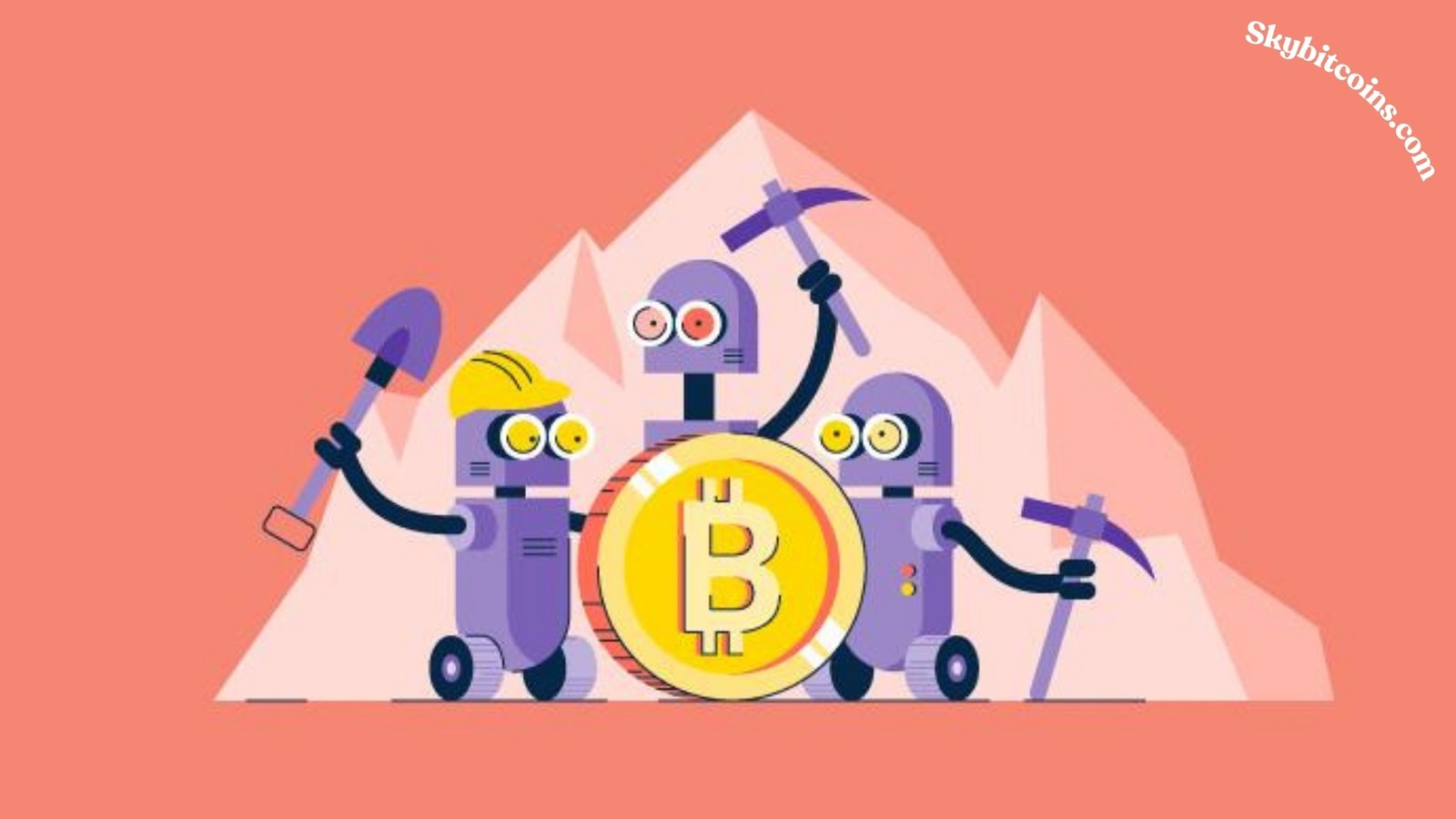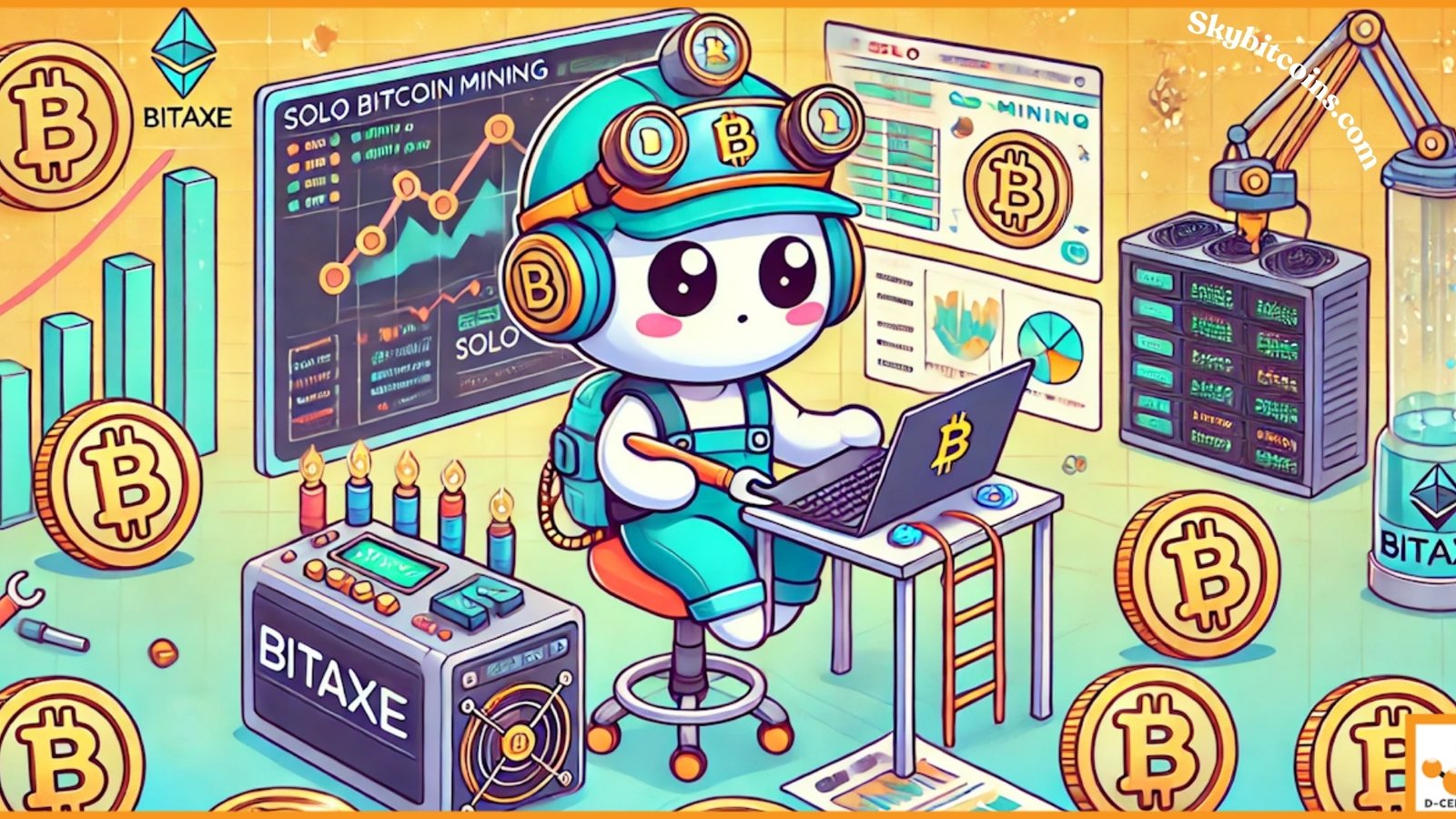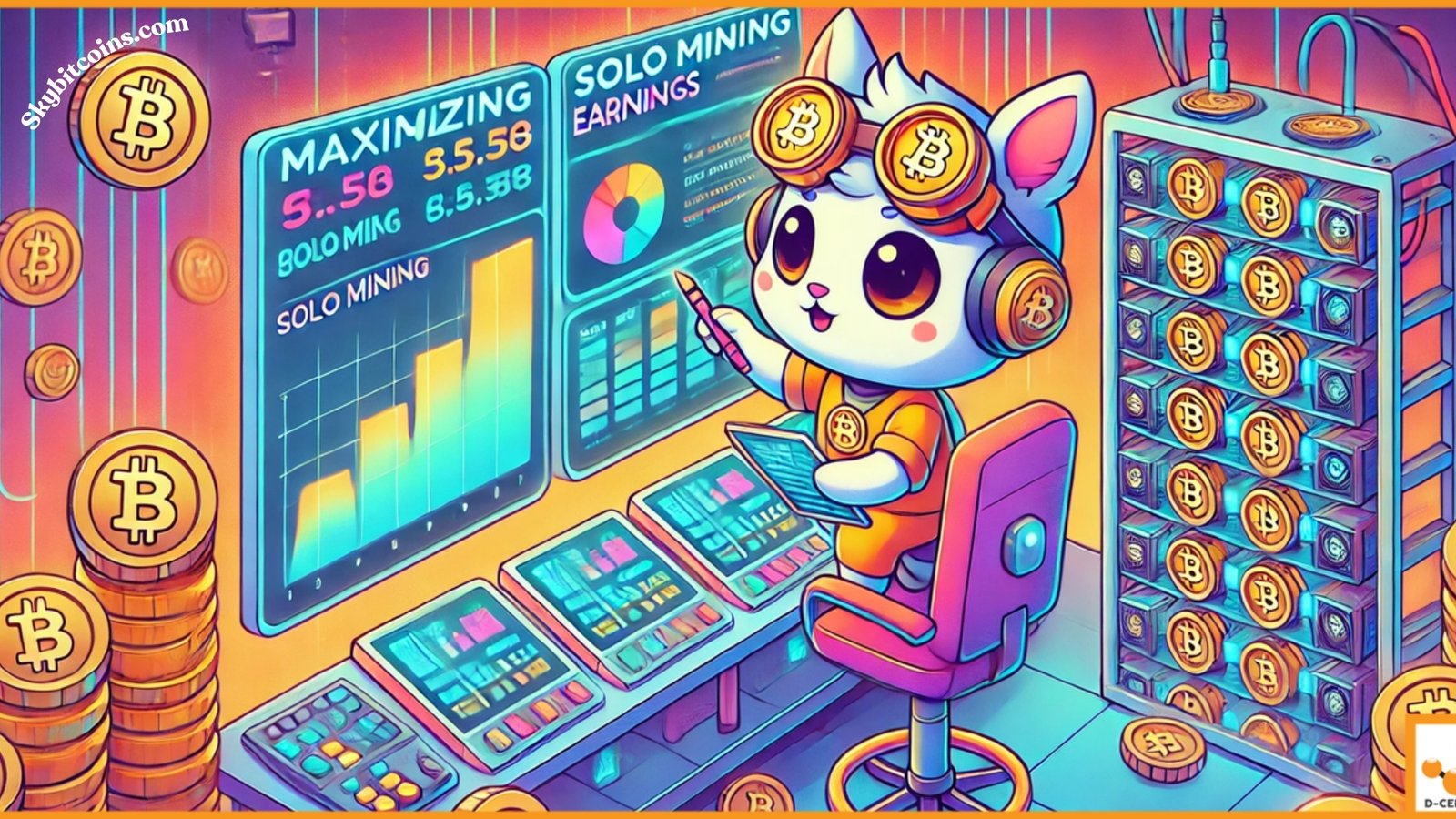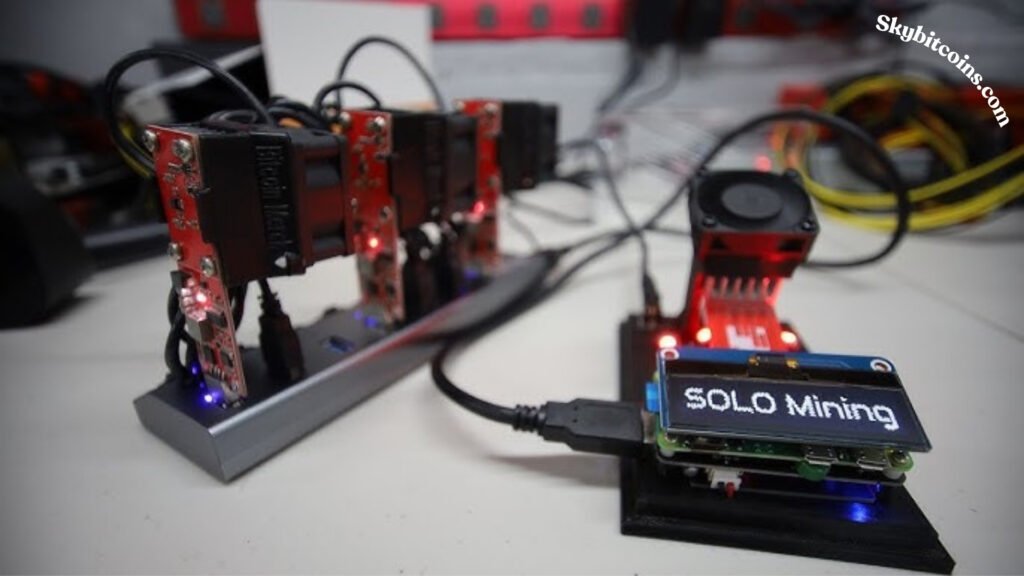Solo Bitcoin Mining: Bitcoin mining has evolved significantly since the cryptocurrency’s inception in 2009. In the early days, solo mining was the norm, and anyone with a basic computer could mine Bitcoin profitably. However, mining difficulty increased as the Bitcoin network grew, and specialized hardware (ASICs) became essential. Despite the dominance of mining pools today, solo mining remains a topic of interest for many in the crypto community. This article explores the current state of solo mining in 2024, its challenges, and potential profitability.
What is Solo Mining?
Solo mining refers to mining Bitcoin independently without joining a mining pool. The miner is responsible for independently finding a valid block in solo mining. When successful, the miner receives the entire block reward, currently at 6.25 BTC, plus any transaction fees included in the block. This contrasts with pool mining, where miners combine their computational power to increase the chances of finding a block, with the reward being distributed among pool members according to their contribution.
The Rise of Mining Pools
Mining pools have become the dominant force in Bitcoin mining, driven by the increasing difficulty of finding a valid block. The Bitcoin network automatically adjusts the difficulty level every 2016 block, or approximately every two weeks, to ensure that a new block is mined approximately every 10 minutes. As the number of miners and their computational power (hash rate) increased, so did the difficulty, making it nearly impossible for individual miners to compete effectively.
Mining pools solve this problem by pooling resources. Instead of each miner working alone, they work together on the same block, significantly increasing their chances of success. When a block is found, the reward is distributed among all pool members based on the computational power they contributed.
Solo Mining in 2024: Is it Still Viable?
In 2024, the landscape of solo mining is vastly different from a decade ago. The advent of ASIC miners, highly specialized hardware designed specifically for mining Bitcoin, has made solo mining more challenging for individuals. These machines are expensive, power-hungry, and require significant technical expertise to operate efficiently.
However, despite these challenges, solo mining has not entirely disappeared. Some miners prefer solo mining for various reasons:
- Complete Control: Solo miners have complete control over their operations, from selecting which transactions to include in a block to the timing of upgrades and adjustments to their hardware.
- No Pool Fees: Mining pools typically charge fees for their services, usually around 1-2% of the block reward. Solo miners do not have to pay these fees, allowing them to keep the entire reward if they successfully mine a block.
- Privacy and Security: Individuals can maintain greater privacy by mining solo, as they are not required to share their mining activity or rewards with a pool operator. This can be important for those concerned about the centralization of mining power and the potential vulnerabilities it introduces.
- Potential for Higher Rewards: The most significant incentive for solo mining is the possibility of earning the full block reward. While the chances of finding a block are lower for solo miners than those in a pool, the reward is much higher when they succeed.
The Challenges of Solo Mining
While solo mining offers several advantages, it is not without its significant challenges, particularly in 2024:
Lower Probability of Success
The primary challenge of solo mining is the lower probability of successfully mining a block. As the network’s total hash rate increases, the chances of an individual miner finding a block decrease proportionally. Finding a block can take months or even years for most solo miners, depending on their hash rate.
Higher Costs
Solo mining requires significant upfront investment in hardware and ongoing costs in electricity and maintenance. ASIC miners, the standard equipment for Bitcoin mining, are expensive and have a limited lifespan. Additionally, the high power consumption of these machines leads to substantial electricity costs, which can be prohibitive for solo miners without access to cheap electricity.
Network Competition
The difficulty of the Bitcoin network is continuously increasing as more miners join the network and existing miners upgrade their hardware. This intensifying competition makes it harder for solo miners to remain profitable, as they must constantly invest in the latest technology to keep up.
Risk of Stale Blocks
Solo miners also face the risk of mining stale blocks. A stale block occurs when two miners find a valid block nearly simultaneously, but only one can be added to the blockchain. The miner whose block is not added loses the reward, which can be a significant loss for a solo miner who may have been mining for months without success.
Strategies for Successful Solo Mining
Despite these challenges, some strategies can increase the likelihood of success for solo miners in 2024:
- Optimizing Hardware: Using the most efficient and powerful ASIC miners is crucial. Regularly upgrading to the latest hardware can help solo miners remain competitive. Additionally, optimizing mining rigs’ cooling and power efficiency can reduce operational costs.
- Location, Location: Mining in regions with low electricity costs and favorable climates can significantly reduce expenses. Some solo miners operate in countries with cheap, renewable energy sources, such as hydropower, to maximize profitability.
- Mining Altcoins: Some miners choose to mine alternative cryptocurrencies (altcoins) that are less competitive than Bitcoin but can still be profitable. These altcoins can later be converted to Bitcoin or other currencies. However, this approach requires careful research, as not all altcoins are viable long-term investments.
- Joining Smaller Pools: While this technically isn’t solo mining, some miners join smaller, decentralized mining pools that offer lower fees and more privacy than the major pools. This allows them to enjoy some of the benefits of solo mining while reducing the risks of finding a block.
The Future of Solo Mining
The future of solo mining in Bitcoin is uncertain. As the network grows and competition intensifies, solo mining will likely become increasingly difficult. However, it may still have a place for those willing to take the risk in exchange for the potential reward. Innovations in mining technology, such as more efficient ASICs or advancements in renewable energy, could also make solo mining more viable.
Moreover, the ethos of decentralization that underpins Bitcoin could drive some miners to continue solo mining to resist the centralization of mining power in large pools. This ideological commitment to the principles of Bitcoin could ensure that solo mining remains a part of the network, even as it becomes more challenging.
Conclusion
Solo mining Bitcoin in 2024 is a high-risk, high-reward endeavor. While the chances of success are slim for most individuals, the potential for a significant payout remains. Solo mining requires significant investment, technical knowledge, and a willingness to accept the risk of long periods without rewards. For those who value independence, privacy, and the potential for full-block rewards, solo mining remains an attractive, if challenging, option. As the Bitcoin network continues to evolve, so will the strategies and technologies solo miners use to stay competitive in this ever-changing landscape.


